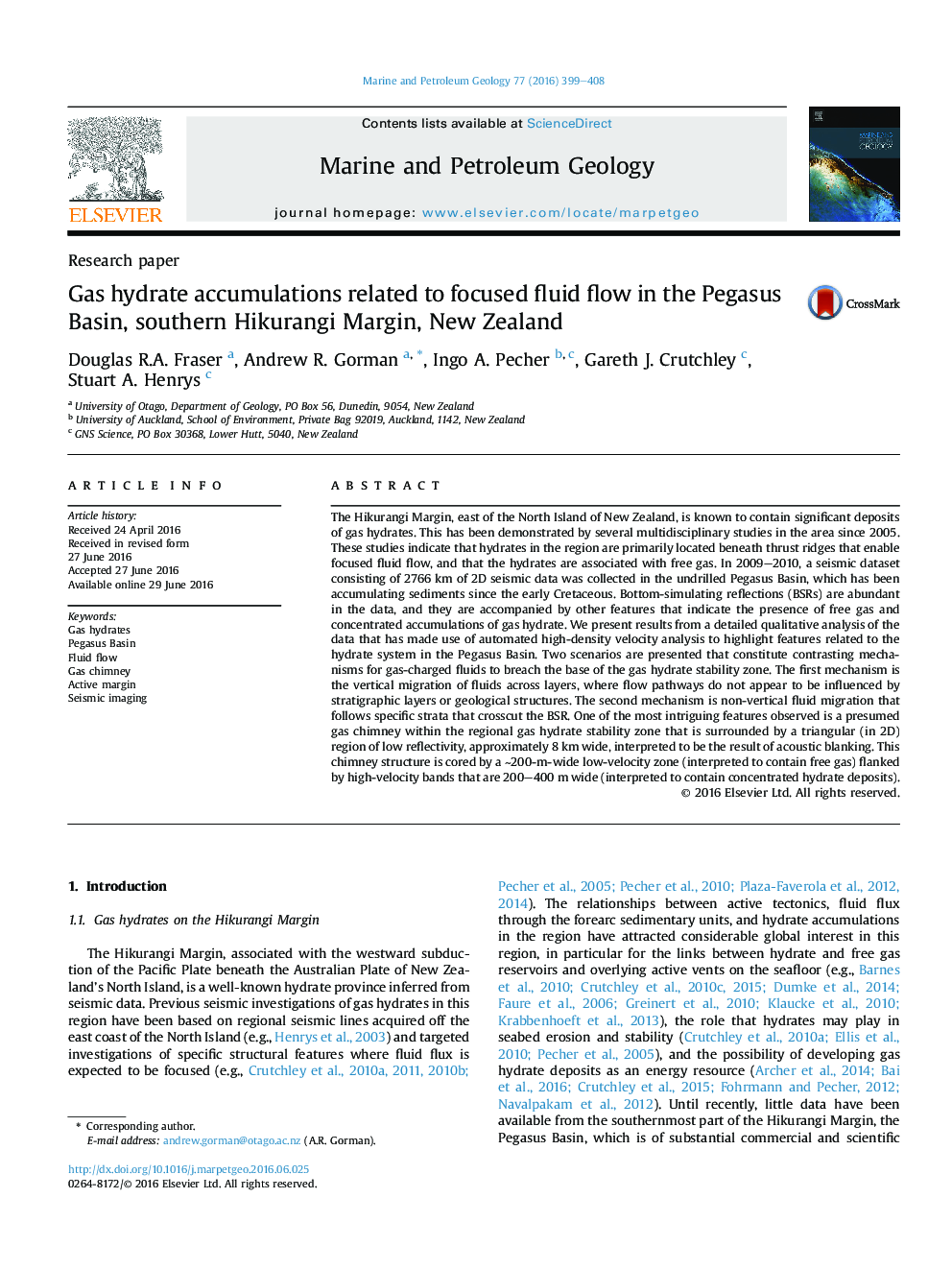| کد مقاله | کد نشریه | سال انتشار | مقاله انگلیسی | نسخه تمام متن |
|---|---|---|---|---|
| 6434557 | 1637150 | 2016 | 10 صفحه PDF | دانلود رایگان |

- New Zealand's Pegasus Basin has widespread seismic indications of gas hydrates.
- High-density automatic seismic velocity analyses constrain hydrate interpretations.
- Detailed velocities mapped in gas chimney: central gas zone flanked by hydrates.
- Acoustic blanking does not necessarily correspond to a hydrate velocity anomaly.
- Two mechanisms are posed for gas migration: along stratigraphy and across it.
The Hikurangi Margin, east of the North Island of New Zealand, is known to contain significant deposits of gas hydrates. This has been demonstrated by several multidisciplinary studies in the area since 2005. These studies indicate that hydrates in the region are primarily located beneath thrust ridges that enable focused fluid flow, and that the hydrates are associated with free gas. In 2009-2010, a seismic dataset consisting of 2766Â km of 2D seismic data was collected in the undrilled Pegasus Basin, which has been accumulating sediments since the early Cretaceous. Bottom-simulating reflections (BSRs) are abundant in the data, and they are accompanied by other features that indicate the presence of free gas and concentrated accumulations of gas hydrate. We present results from a detailed qualitative analysis of the data that has made use of automated high-density velocity analysis to highlight features related to the hydrate system in the Pegasus Basin. Two scenarios are presented that constitute contrasting mechanisms for gas-charged fluids to breach the base of the gas hydrate stability zone. The first mechanism is the vertical migration of fluids across layers, where flow pathways do not appear to be influenced by stratigraphic layers or geological structures. The second mechanism is non-vertical fluid migration that follows specific strata that crosscut the BSR. One of the most intriguing features observed is a presumed gas chimney within the regional gas hydrate stability zone that is surrounded by a triangular (in 2D) region of low reflectivity, approximately 8Â km wide, interpreted to be the result of acoustic blanking. This chimney structure is cored by a â¼200-m-wide low-velocity zone (interpreted to contain free gas) flanked by high-velocity bands that are 200-400Â m wide (interpreted to contain concentrated hydrate deposits).
Journal: Marine and Petroleum Geology - Volume 77, November 2016, Pages 399-408